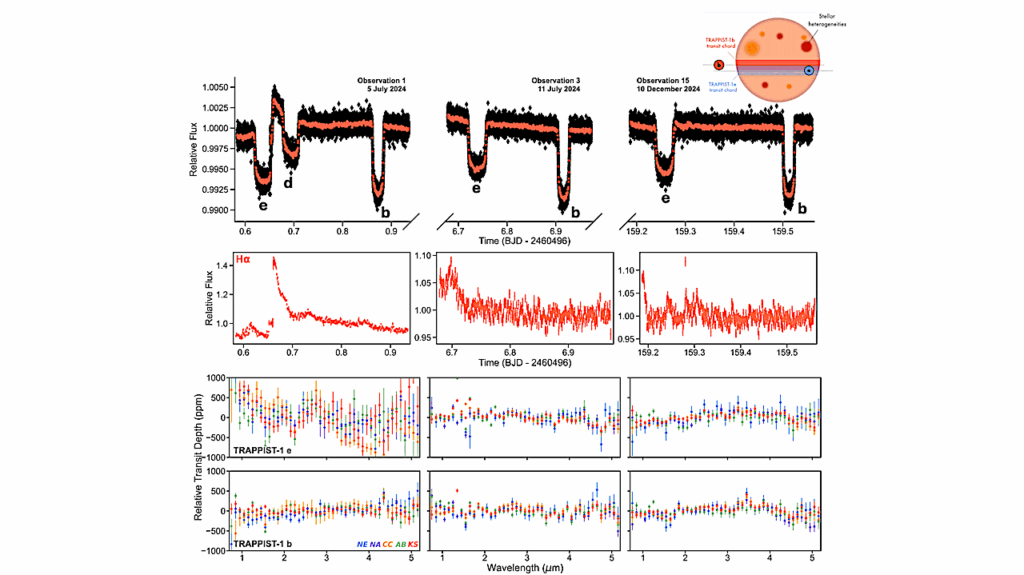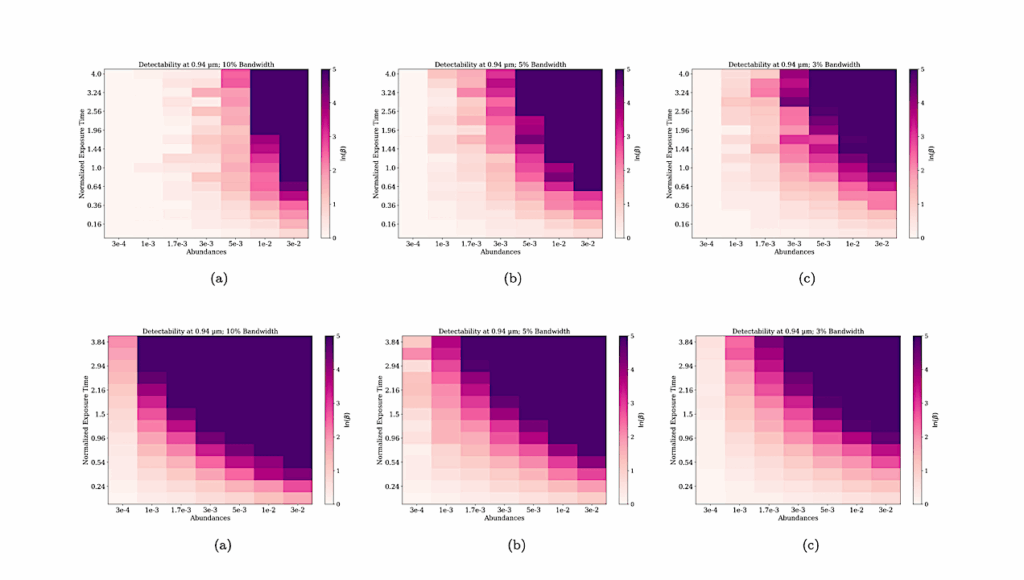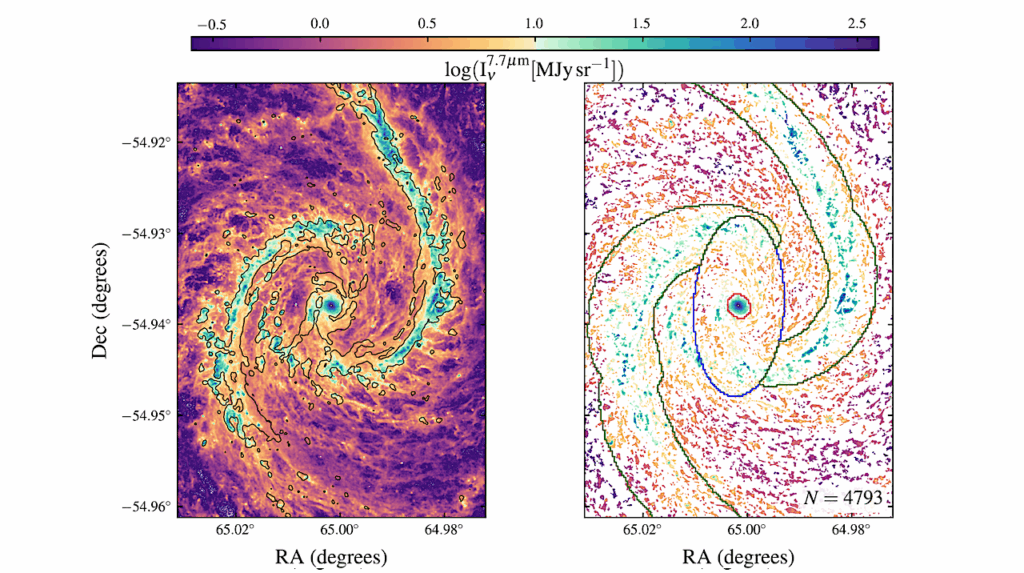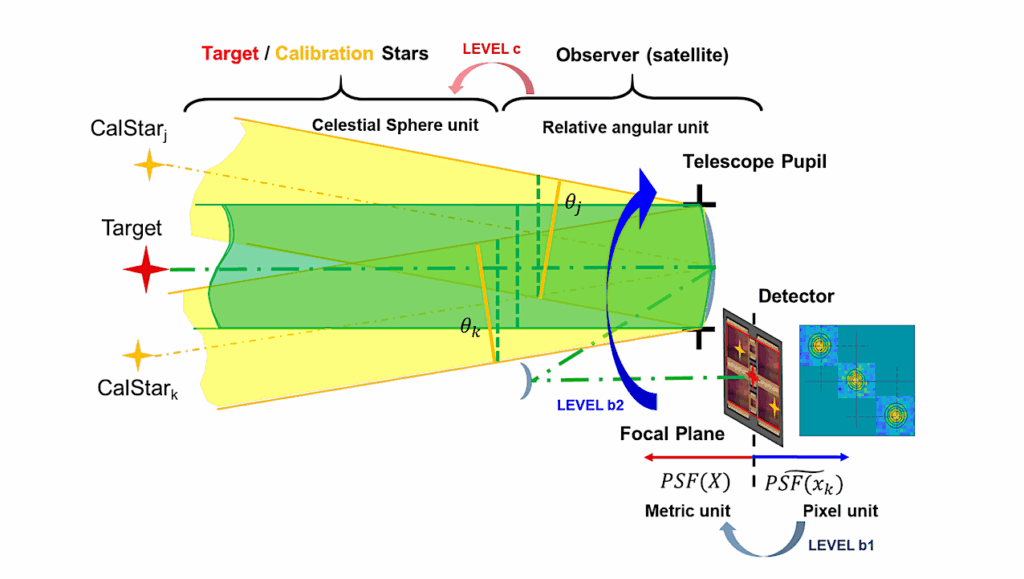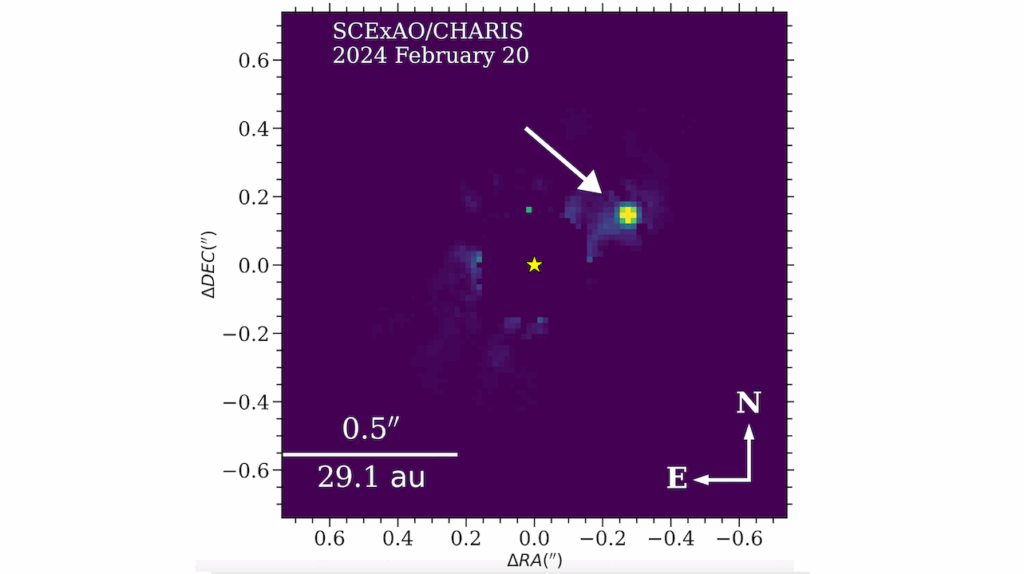High-precision NEID Spectrograph Helps Confirm First Gaia Astrometric Planet Discovery
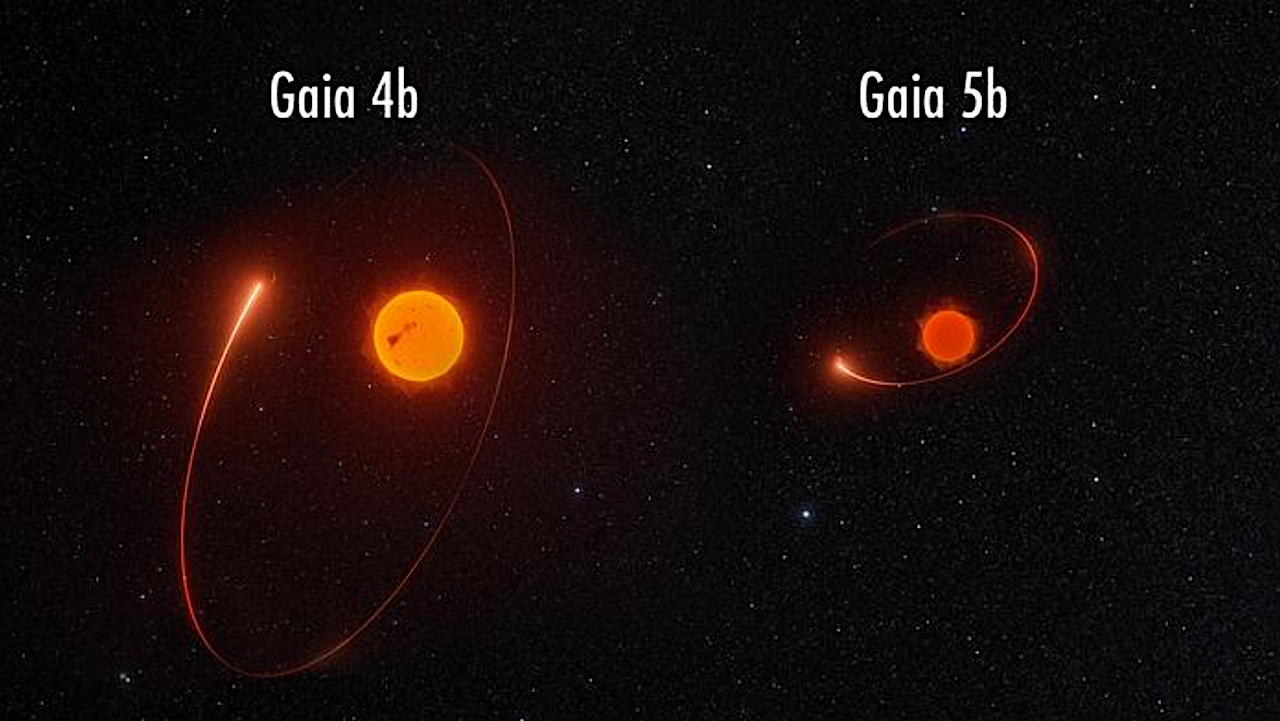
NEID (rhymes with fluid) is a high-precision radial-velocity spectrograph that is designed to measure the extremely minute wobble of nearby stars using the radial velocity effect. This effect results from the mutual gravitational force between a planet and its host star which causes the star’s position to shift very slightly as the planet travels around it. With this powerful capability, one of NEID’s main science goals is to confirm exoplanet candidates found by other exoplanet missions.
NEID is funded by the NASA/NSF Exoplanet Exploration Program (NN-EXPLORE) and is mounted on the WIYN 3.5-meter Telescope at the U.S. National Science Foundation Kitt Peak National Observatory (KPNO), a Program of NSF NOIRLab.
One mission that NEID is complementing is the European Space Agency’s (ESA) Gaia spacecraft. Through its precise monitoring of the positions and motions of stars in our galaxy, Gaia is revolutionizing our understanding of many areas of astrophysics. With its exquisite precision, Gaia is expected to be able to detect thousands of exoplanets in orbit around nearby stars.
Unlike the radial velocity method used by NEID, Gaia uses a technique known as astrometry to detect a star’s motion. This technique involves measuring the subtle motion of a star as it is tugged by the gravity of an orbiting planet by looking at how the star moves compared to background or nearby stars.
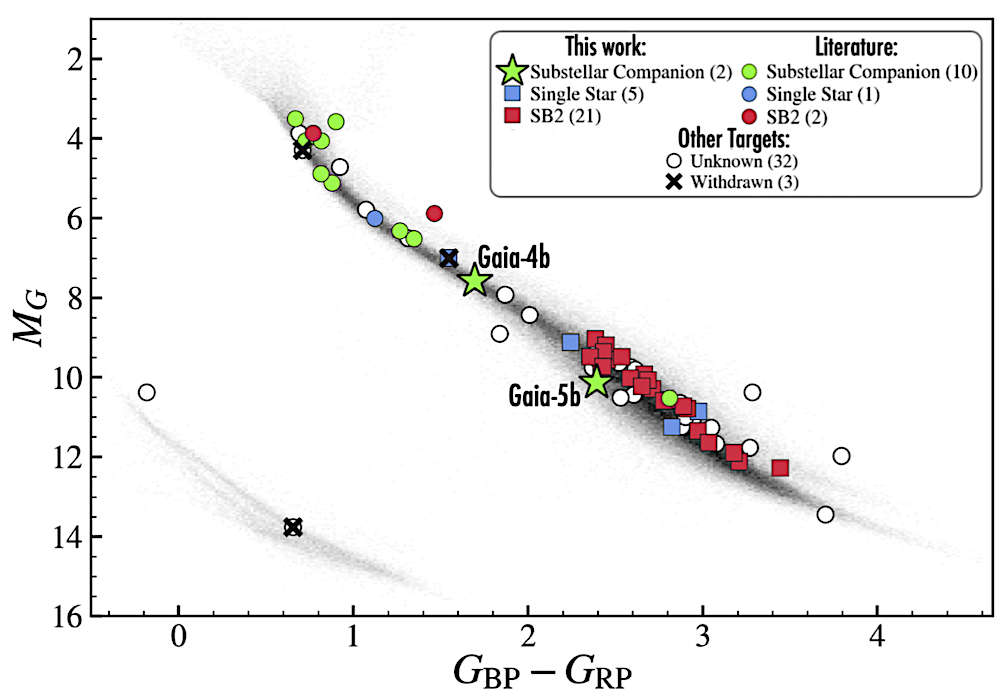
Color–magnitude diagram of Gaia astrometric candidate planets and substellar objects. The 28 systems observed as part of this work are highlighted with stars or squares, while other systems from the literature are highlighted with the circles. Confirmed substellar companions are highlighted in green. Systems that are consistent with single stars but have yet to have a Gaia astrometric companion fully confirmed are highlighted in blue. Double-lined binary systems (SB 2) are highlighted in red. Systems that have an unknown designation are shown with white circles. The three Gaia-ASOI systems for which the Gaia astrometric solution was retracted are shown with black crosses. Gaia-4b and Gaia-5b are highlighted with the green star markers. For comparison, the Gaia Catalog of Nearby Stars (Gaia Collaboration et al. 2021) is shown with faint gray points in the background. — The Astronomical Journal
Recently, as part of the latest Gaia data release, a list of stars that appear to be moving as though pulled by an exoplanet — the list of Gaia AStrometric Objects of Interest (Gaia-ASOIs) — was published. “However, the motion of these stars is not necessarily due to a planet,” said Guðmundur Stefánsson, assistant professor at the University of Amsterdam and lead author of the paper appearing in The Astrophysical Journal. “Instead, the ‘star’ might be a pair of stars that are too close together for Gaia to recognize them as separate objects. The tiny shifts in position that appear to be due to a planet might actually result from the nearly perfect cancellation of the larger shifts in position of the two stars.”
To weed out these binary stars and harvest the true planets, it is necessary to conduct follow-up observations with spectroscopy. To do so, the team used observations from NEID and two other spectrographs: the Habitable-zone Planet Finder (HPF) on the 10-meter Hobby Eberly Telescope at McDonald Observatory in Texas, and the FIES Spectrograph on the 2.6-meter Nordic Optical Telescope at La Palma in the Canary Islands.
With these powerful instruments the team conducted follow-up observations of 28 star systems with planet candidates identified by Gaia. They found that of the 28 candidate systems 21 were false positives and were actually binary star systems — two stars that orbit a common center of mass. They also confirmed that one system is a star hosting a brown dwarf [1] — an object with a mass in between those of planets and stars — but one was a star hosting a giant planet.
The newly discovered exoplanet, named Gaia-4b, has an orbital period of 570 days and a mass of 12 Jupiter masses and orbits a star 64% of the mass of the Sun. Not only is Gaia-4b the first planet ever detected by Gaia using the astrometric technique whose orbital solution is fully and independently confirmed, but it is also one of the most massive planets known to orbit a low-mass star.
“It is an exciting time for both NEID and Gaia,” says Jayadev Rajagopal, scientist at NSF NOIRLab and a co-author of the paper. “Gaia is more than living up to its promise of detecting planetary companions to stars with highly precise astrometry, and NEID is demonstrating that its long-term radial velocity precision is capable of detecting low-mass planets around those stars. With more candidate planets to come as roughly the last year of data is analyzed, this work is a harbinger of the future where Gaia discoveries of planets and brown dwarfs will need to be confirmed, or rejected, by NEID data.”
In addition to the detection of Gaia-4b and Gaia-5b, the authors provide a first glimpse of the ‘false positive rate’ of the Gaia Astrometric Exoplanet catalog, which is in the range 30–80% in their sample. This highlights the importance of ground-based observations like those possible with NEID in confirming planetary candidates in the Gaia-planet-detection era.
Notes
[1] The newly discovered brown dwarf, named Gaia-5b, is a 21-Jupiter-mass brown dwarf in a 358-day eccentric orbit around a star with 34% of the mass of the Sun.
Gaia-4b and 5b: Radial Velocity Confirmation of Gaia Astrometric Orbital Solutions Reveal a Massive Planet and a Brown Dwarf Orbiting Low-mass Stars, The Astronomical Journal (open access)
Astrobiology



